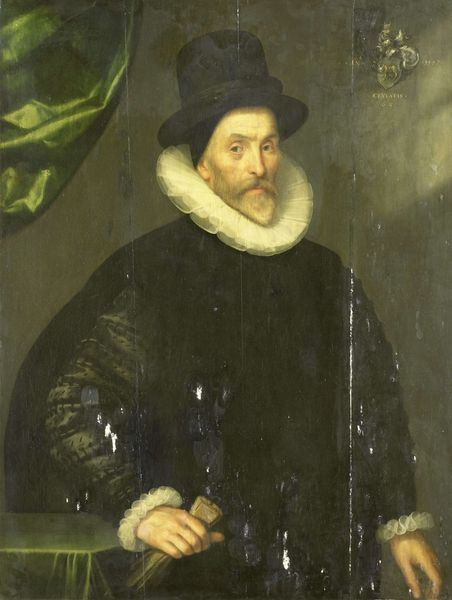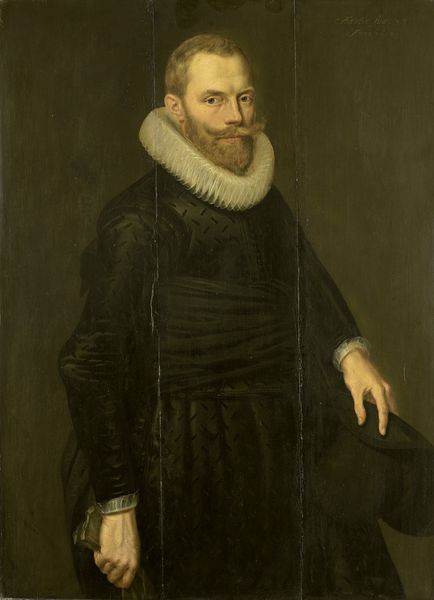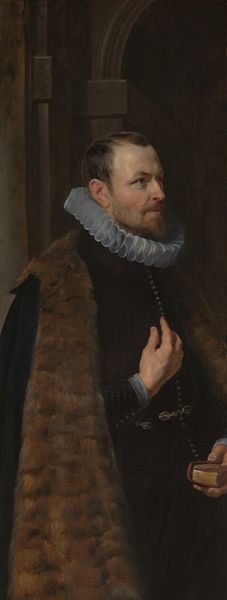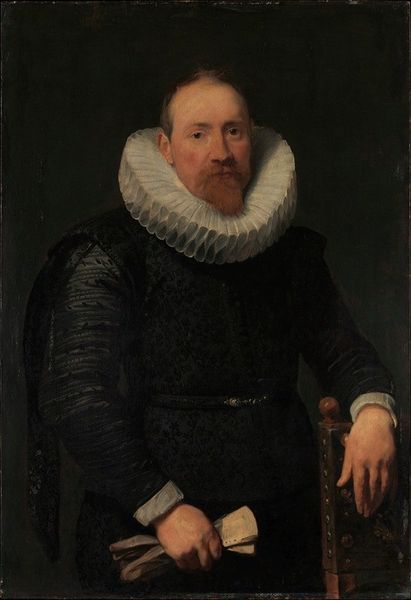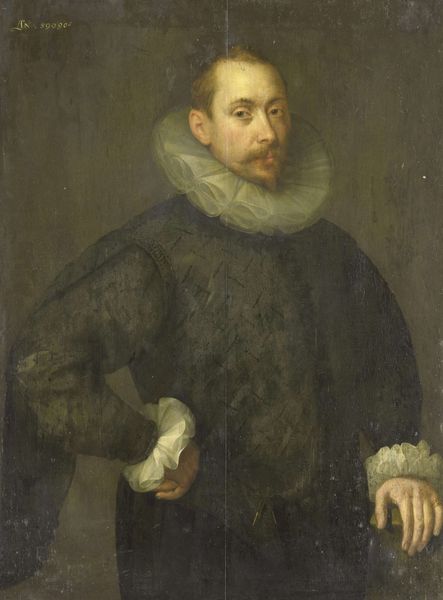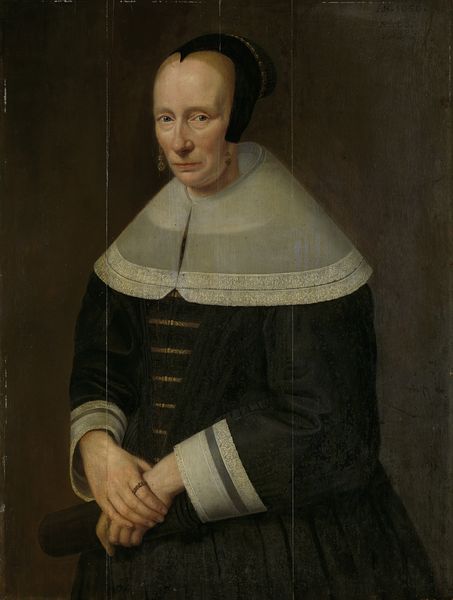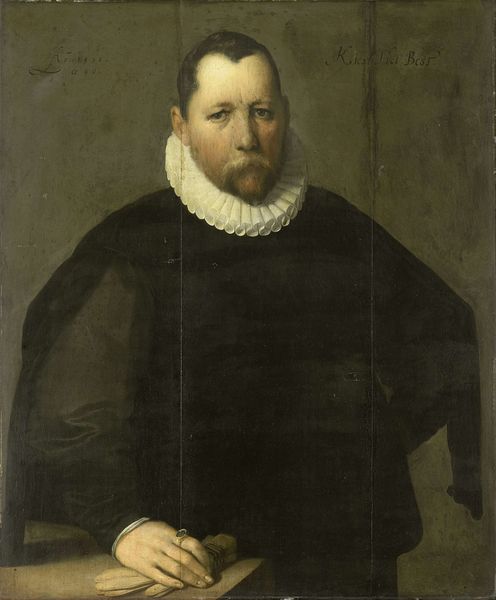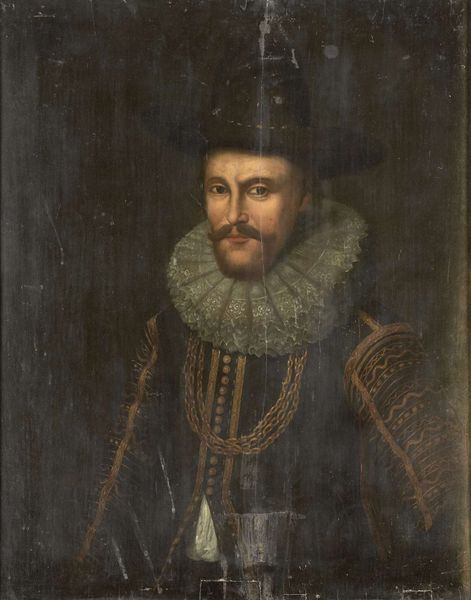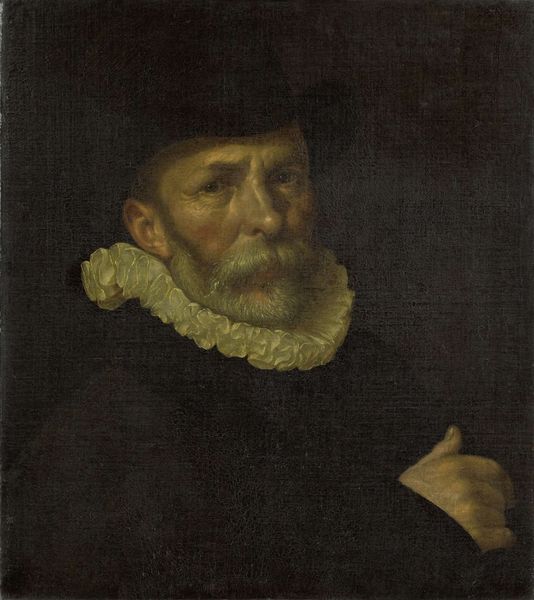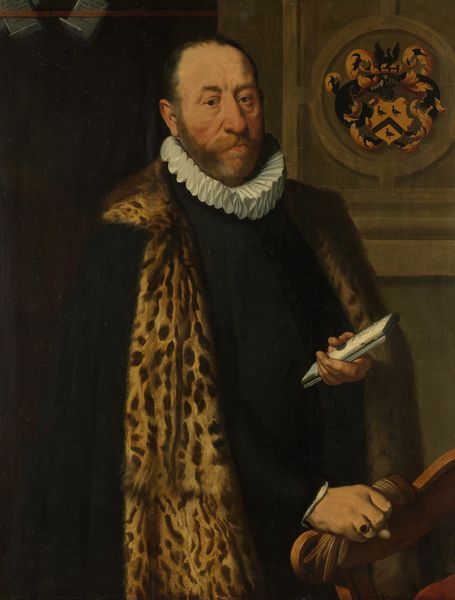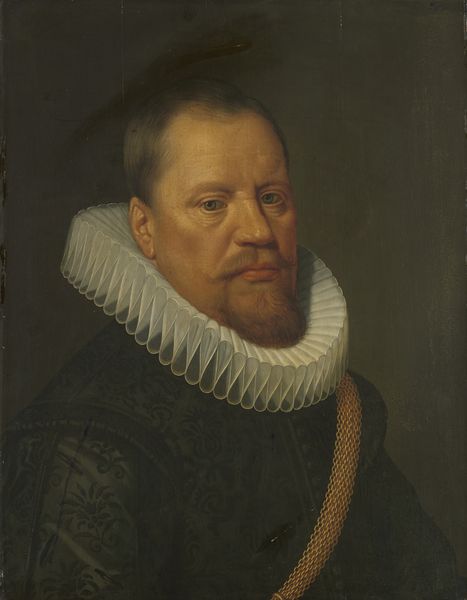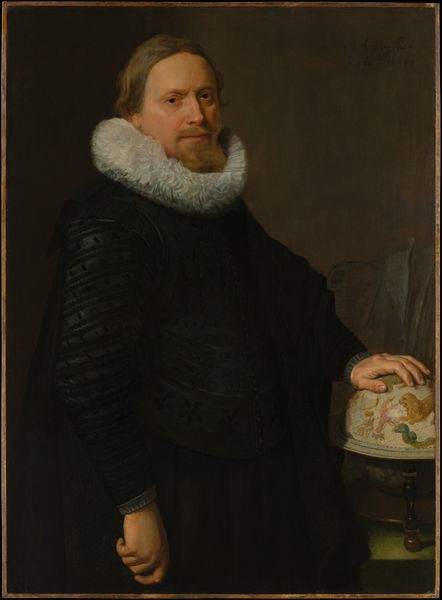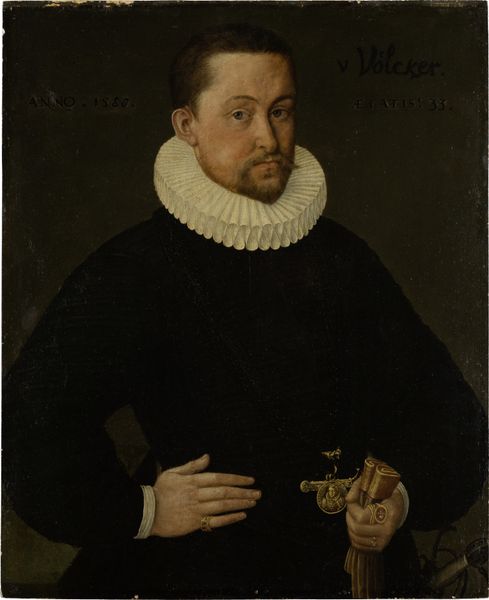
Portrait of Paulus Cornelisz van Beresteyn (1548-1625), Burgomaster of Delft 1592
0:00
0:00
oil-paint
#
portrait
#
baroque
#
dutch-golden-age
#
oil-paint
#
figuration
#
history-painting
Dimensions: height 116 cm, width 84 cm, depth 7.5 cm
Copyright: Rijks Museum: Open Domain
Editor: This is a portrait of Paulus Cornelisz van Beresteyn, painted in 1592 by Jacob Willemsz. Delff. It's striking how direct and confident his gaze is. What stands out to you about this painting? Curator: I see a fascinating visual language at play here, a kind of constructed identity rooted in civic pride and familial legacy. Notice the coat of arms in the upper right, a clear assertion of lineage. The letter he holds, and his very deliberate hand gestures, almost invite interpretation like symbolic gestures within a play. What might these objects represent in the theatre of his life? Editor: So you see these things as performative symbols? I hadn't considered that. Is there something specific about the letter? Curator: Absolutely. Letters in portraits of this era aren't simply props. They represent communication, intellect, and, crucially, a connection to the wider world of trade and diplomacy that fuelled the Dutch Golden Age. It suggests he is a man of affairs, directly involved in the business of state, linking to broader European events. The letter symbolizes something even greater, right? Editor: The ring! Curator: Yes! Consider the prominent ring—it screams wealth and status, but might there be a family crest or significant design element incorporated into it? The painter leaves visual clues that construct this narrative. These carefully placed symbols work together to solidify the image of a capable, respectable, and powerful leader. What do we, as viewers centuries later, take away from this meticulously crafted image? Editor: I see what you mean. It is a constructed identity, not just a likeness. It is really interesting how symbols accumulate meanings and tell larger stories. Curator: Precisely! It is a dance of symbolic gestures revealing this man’s self-representation within the broader context of his time. Food for thought!
Comments
No comments
Be the first to comment and join the conversation on the ultimate creative platform.
